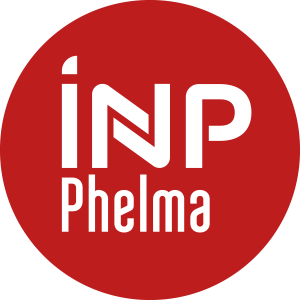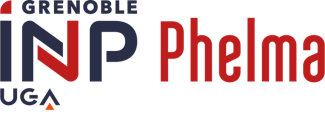Number of hours
- Lectures 12.0
- Projects 0
- Tutorials 14.0
- Internship 0
- Laboratory works 0
ECTS
ECTS 2.0
Goal(s)
For an engineer as for a researcher, mathematics is an essential toolbox for modeling and solving problems in physics, whose applications are today considerably amplified by the democratization of programming languages ??and computer resources.
The objective of this course is to introduce two important mathematical tools: (i) orthonormal bases of functions, which also use special functions that have become common in physics; (ii) and Green's functions, which are a powerful means of solving a multidimensional differential equation with boundary conditions. These functions use the orthonormal bases presented in (i).
The course requires a good foundation in mathematics, as well as routine practice of formal calculus: integrals and multiple sums, differential calculus, complex analysis and integral transforms are frequently used. These prerequisites explain why these tools, despite their usefulness and universality, are presented so late in the school curriculum. Each stage of the course will be punctuated by a TD, during which some examples of applications to the resolution of concrete problems will be presented.
A refresher course will be provided in the first part.
Content(s)
1) First part: refresher course (10h tutorials, continuous assessment, provided by G. Thiamova)
2) Second part: orthonormal bases of functions (6h CM + 2h tutorials, final exam, S. Chabod):
- interest in physics
- eigenfunctions and eigenvalues ??of the Laplacian on: (i) the cube; (ii) the cylinder: Bessel functions, Fourier-Bessel series; (iii) the sphere: Legendre polynomials, Fourier-Legendre series, spherical harmonics.
- example of application to electromagnetism: calculation of the electric potential.
3) Third part: Green functions (6h CM + 2h TD, final exam, S. Chabod)
- application to the resolution of differential equations with boundary conditions
- spectral representation of Green functions
- special case of the Laplacian operator
- example of application to quantum mechanics: diffusion of a particle in a repulsive potential
Prerequisites
Routine practice of formal calculus: integrals and multiple sums, differential calculus, complex analysis, vector analysis, integral transforms
En présentiel
SESSION NORMALE :
Types d'évaluation (examen écrit, oral, CC, TP, Rapport, ...) :
*Évaluation rattrapable :*
Type d'évaluation :
Durée :
Documents autorisés :
Documents interdits :
Matériels spécifiques autorisés :
Calculatrice :
Possible en distanciel :
Commentaire :
*Évaluation non rattrapable :*
Type d'évaluation :
Durée :
Documents autorisés :
Documents interdits :
Matériels spécifiques autorisés :
Calculatrice :
Possible en distanciel :
Commentaire :
SESSION DE RATTRAPAGE :
Types d'évaluation (examen écrit, oral, CC, TP, Rapport, ...) :
Type d'évaluation :
Durée :
Documents autorisés :
Documents interdits :
Matériels spécifiques autorisés :
Calculatrice :
Possible en distanciel :
Commentaire :
-------------------------------------------------------------------------
En distanciel
SESSION NORMALE :
Types d'évaluation (examen écrit, oral, CC, TP, Rapport, ...) :
*Évaluation rattrapable :*
Type d'évaluation :
Durée :
Documents autorisés :
Documents interdits :
Matériels spécifiques autorisés :
Calculatrice :
Commentaire :
*Évaluation non rattrapable :*
Type d'évaluation :
Durée :
Documents autorisés :
Documents interdits :
Matériels spécifiques autorisés :
Calculatrice :
Commentaire :
SESSION DE RATTRAPAGE :
Types d'évaluation (examen écrit, oral, CC, TP, Rapport, ...) :
Type d'évaluation :
Durée :
Documents autorisés :
Documents interdits :
Matériels spécifiques autorisés :
Calculatrice :
Commentaire :
Contrôle continu : CC
Examen écrit Session1 : DS1
Examen écrit Session 2 : DS2
N1 = Note finale session 1
N2 = Note finale session 2
En présentiel :
N1 = 33 % CC + 67% DS1
N2 = 33 % CC + 67% DS2
En distanciel :
N1 =
N2 =
Commentaire :



